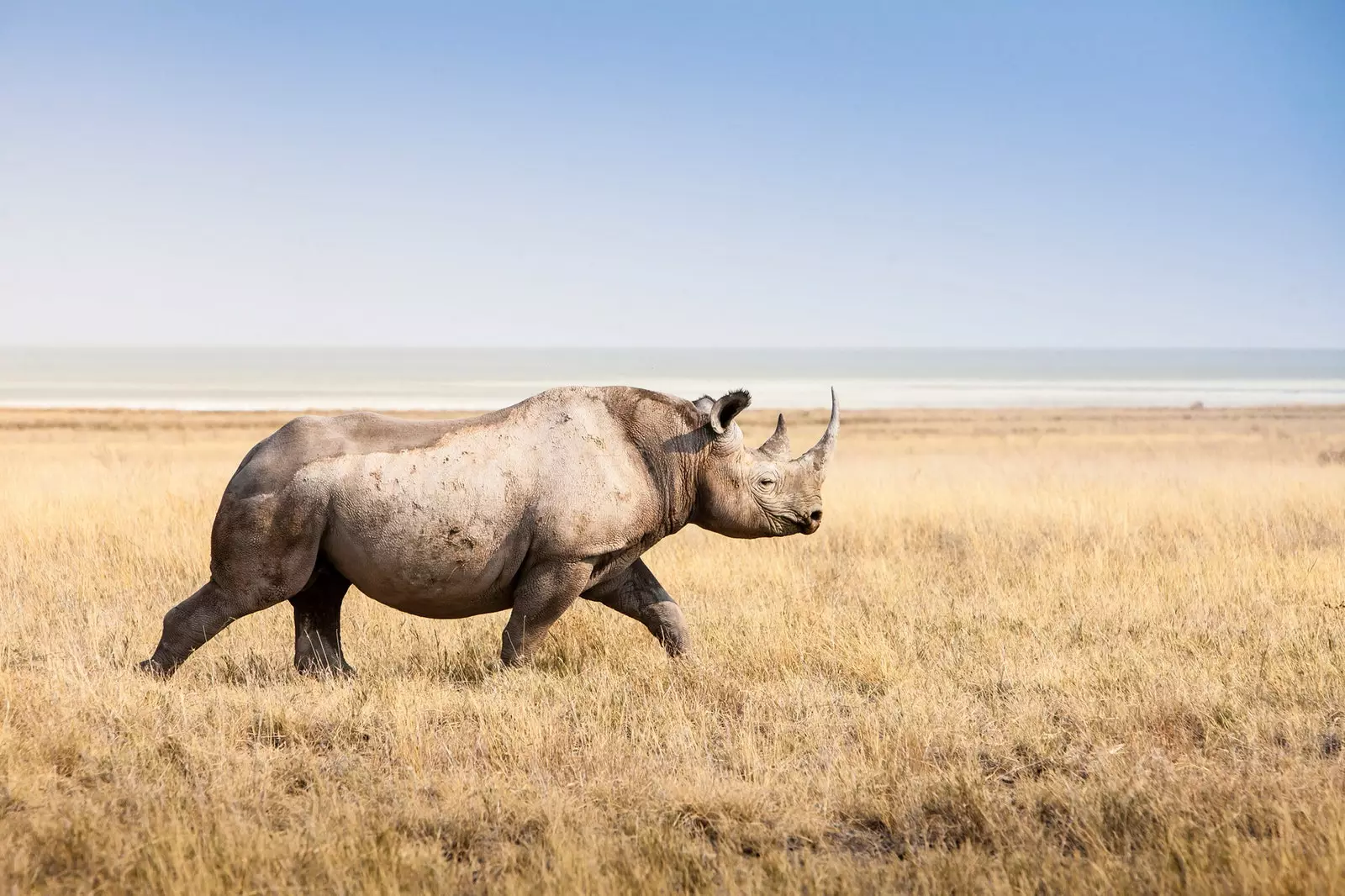
Ecotourism to finance the protection of the last rhinos
If the 20th century taught us anything, it was that if we act without responsibility and commitment, the price of the consequences is very high. If the 21st century is teaching us anything, it is that You have to seize the moment, because in a matter of days, everything can change and opportunities disappear.
Is it possible to merge both lessons and bet on a future in which we can enjoy ourselves with responsibility and commitment, without losing ourselves the wonders and experiences that life and nature offer us, but without any abuse or destruction?
In Namibia, two ecotourism projects, Onguma and Wolwedans, they are already immersed in that enriching and sustainable future, to be an example that it is not a utopia, but a reality.
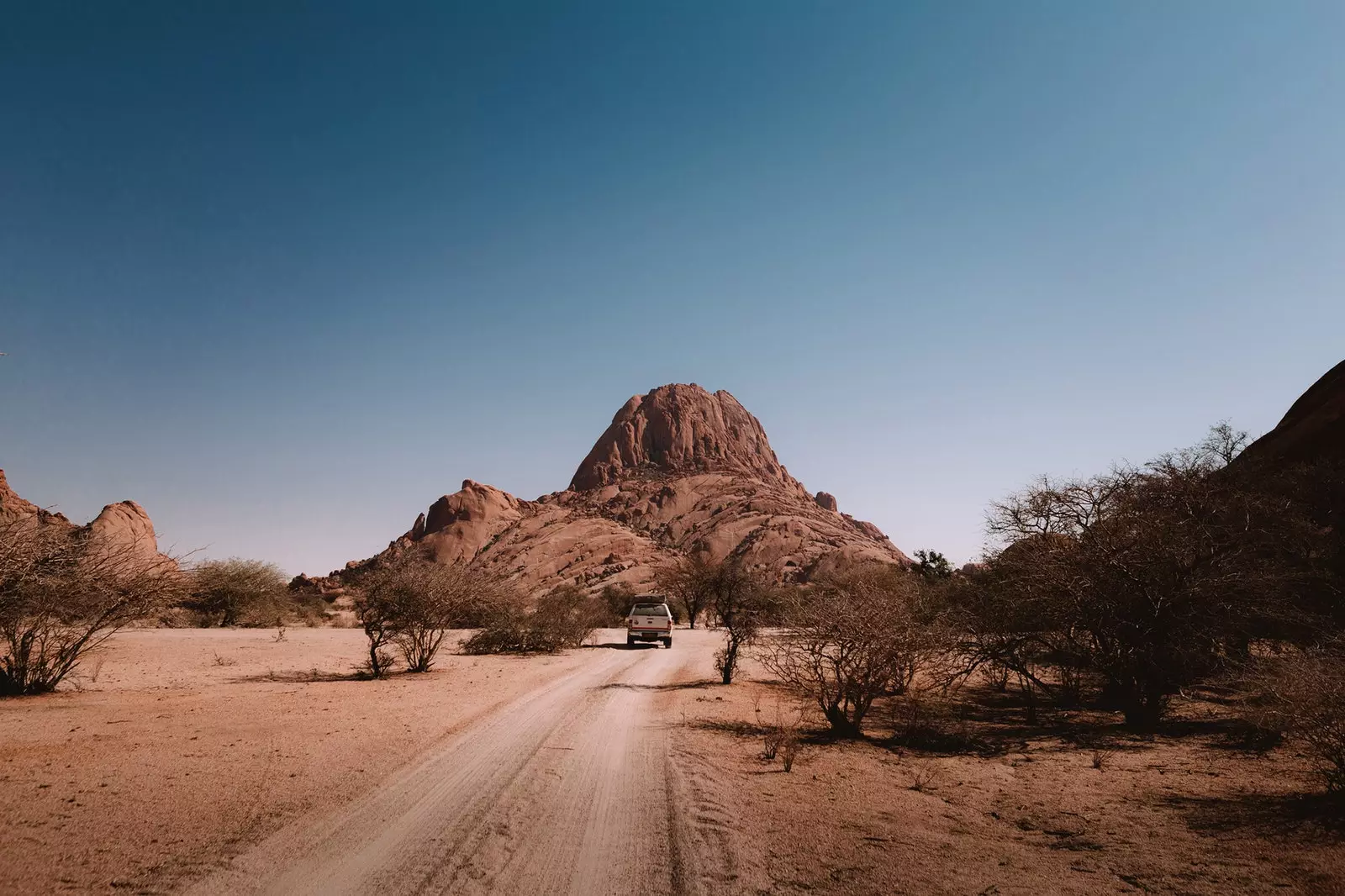
We will travel through a country with vast natural terrain through landscapes that show the entire color palette
In this article, I invite you to accompany me through the vast Namibia, from north to south, from rhinos to dunes, driving a 4X4. We will travel through a country with vast natural terrain through landscapes that show the entire color palette, in addition to meeting these two great references of sustainable tourism that are promoting conservation.
Both projects offer a holiday experience with high quality accommodation for tourists, while maintaining important nature preservation and tourism programs. The fight against poaching is being strengthened thanks to these organizations and the quality of human life and nature is increasing remarkably.
In this way, the mark we leave behind as tourists in search of unique vacation, leisure and personal experiences becomes part of the dynamic chain of economic and environmental sustainability in Namibia.
On this trip, we will go for a route full of learning, for kilometers and kilometers of virgin lands until we merge with the dunes of the oldest desert in the world.
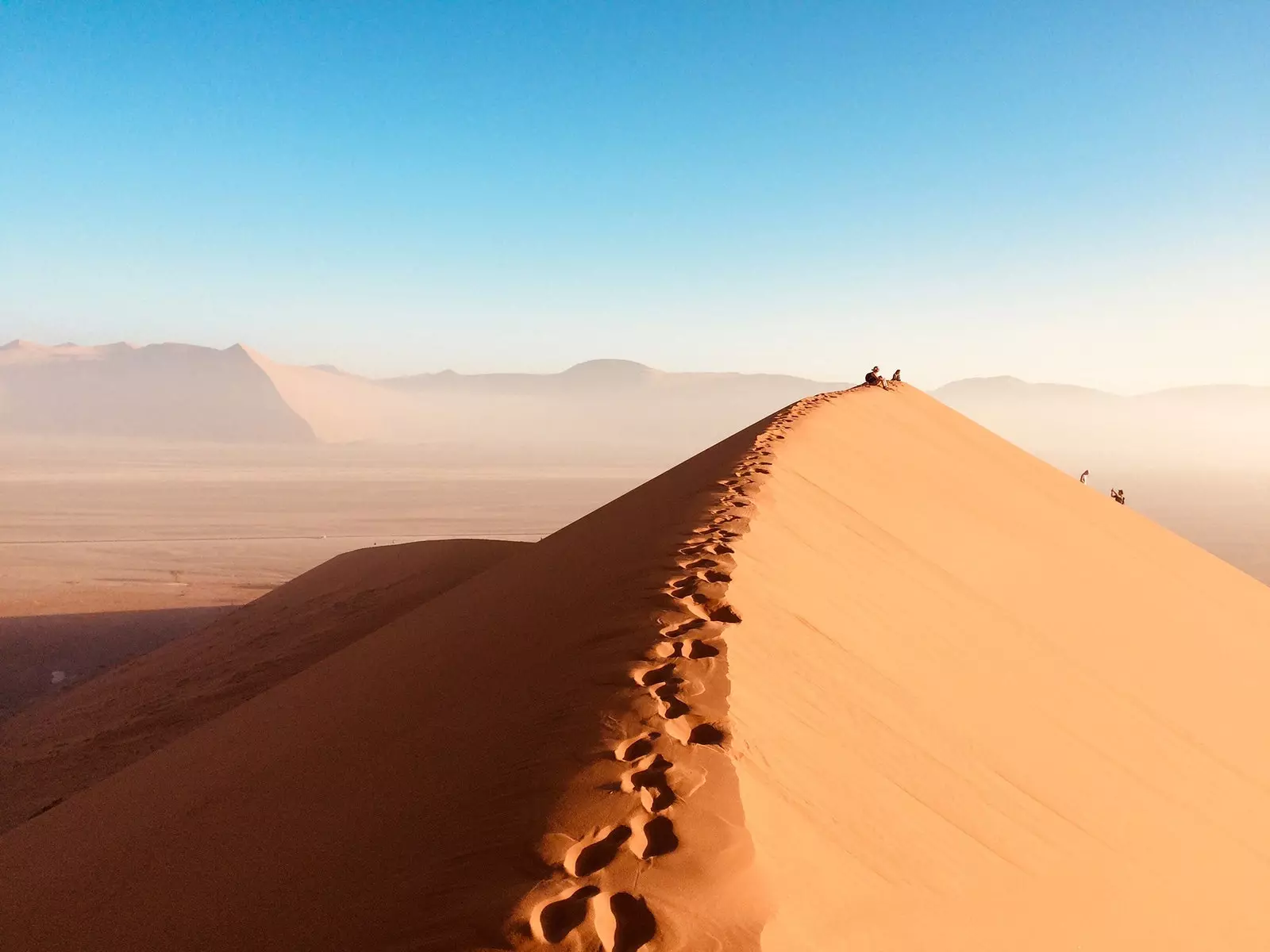
Kilometers and kilometers of virgin lands until we merge with the dunes of the oldest desert in the world
VAST PLACE
namib is a word of Khoekhoe origin (language spoken in Namibia, Botswana and South Africa) which means 'vast place'. Indeed, the Republic of Namibia is a country with an extensive territory of more than 800,000 kilometers —nearly twice the size of Spain—and a population of just two and a half million inhabitants. Therefore, most of this country is made up of uninhabited natural spaces, making Namibia an ideal destination to explore little-exploited places and delve into such unique landscapes as the oldest desert in the world. Namibia is a territory that, after being a colony of the German Empire and later of South Africa, suffered racial segregation (apartheid) so many of its inhabitants had to leave their land.
However, since its independence in 1990, Namibia has regained its autonomy. Currently, private organizations that have developed around conservation are a great example of sustainable development. Furthermore, Namibia is one of the safest countries in Africa; crime rates are very low and you can breathe a great tranquility while walking.
The best plan to get to know Namibia is travel by car, independently. The route becomes a treasure of experiences and discoveries thanks to the diverse cultures that the country has, like that of the Bushmen, one of the oldest and that wastes a special energy. As we drive along dusty roads, we come across the possibility of stop in camps where we are received by generous and kind people with a smile that radiates joy. At no time is there any sense of danger.
Although, until now, the Namibian economy depended largely on mining, nature tourism is hot on its heels and has become a key pillar for the sustainable resurgence of the country for its natural beauty and native fauna. This allows wealth is distributed more equitably among the population and that work be done to preserve its biodiversity, since the future of this sector depends on it.
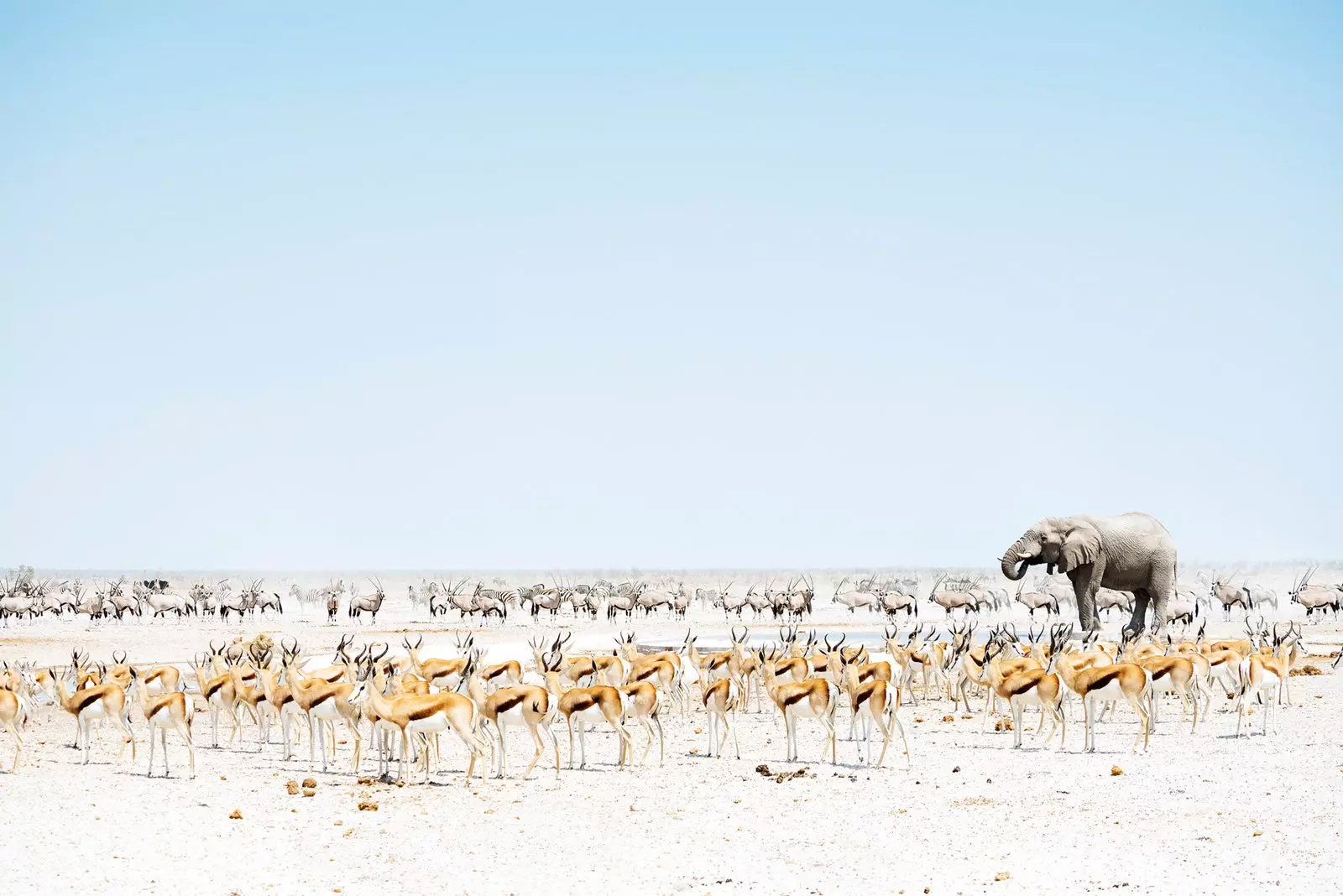
Nature tourism is becoming a key pillar for the sustainable resurgence of the country for its natural beauty and native fauna
Because the Namibian government does not have sufficient funds to preserve such tracts of land, it has decided deliver some of them to private initiatives such as the case of Onguma or Wolwedans, organizations that have the capacity to move the economy from the ecotourism sector to then invest in conserving these spaces while empowering local communities. In this way, they protect the environment and generate quality employment that increases the quality of life of the local population.
For me, as a developer of nature and conservation tourism projects, Namibia is a great reference to take into account. Private organizations, working hand in hand with the community, have shown that they play an extremely important role in various sectors of society, such as economics, tourism, education or those related to natural resources.
In this country we find people highly committed to recovering and conserving their biodiversity, demonstrating that you can live in harmony with nature while maintaining sustainable and equitable development.
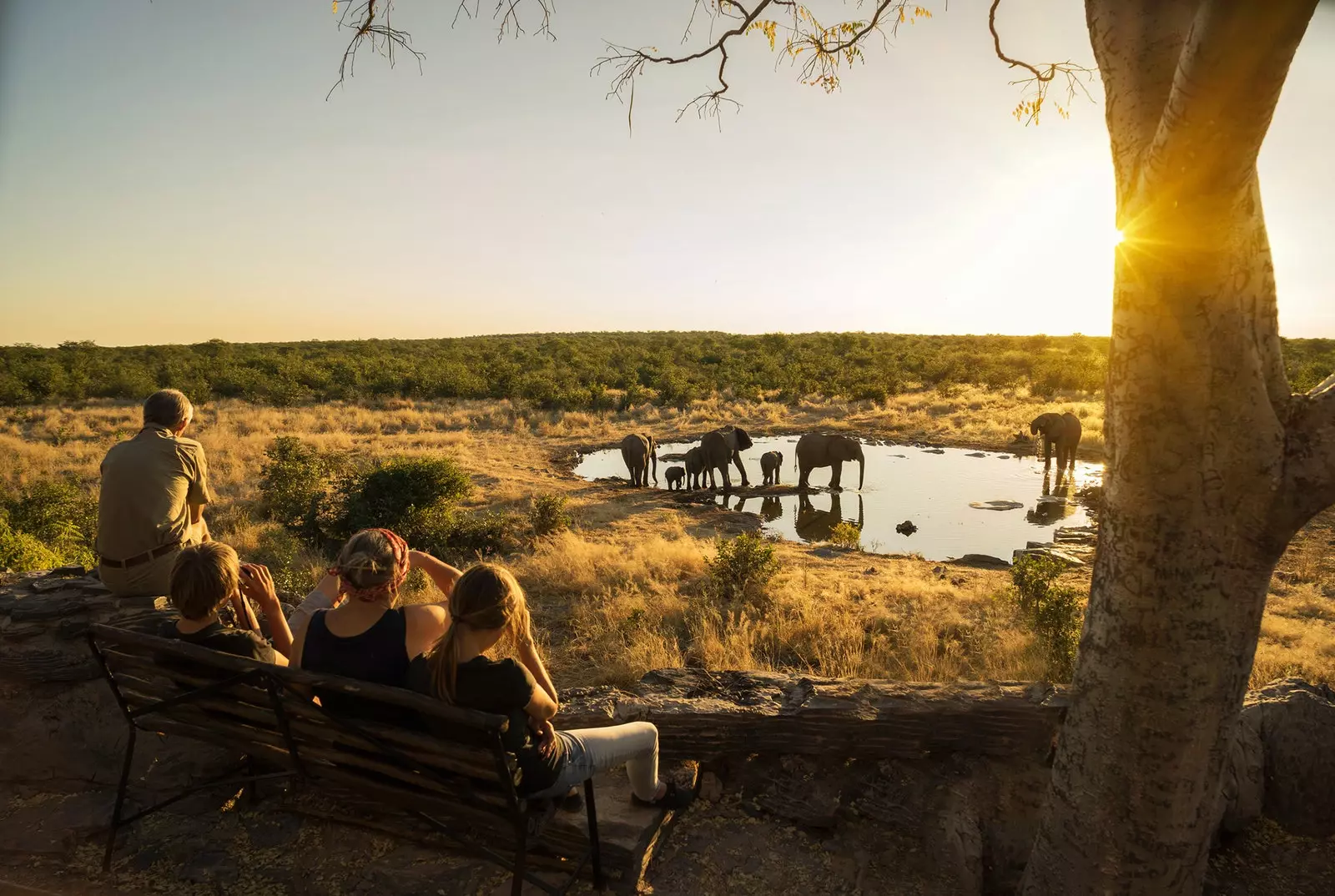
The commitment to recover and conserve biodiversity
The vastness of its territory, the tranquility with which it is traveled and the tourism initiatives that contribute to conservation make Namibia a perfect place for an exciting trip. I recommend that you choose a certain route, instead of trying to do the whole country in one go, since, otherwise, you will spend much of the trip driving. Namibia is a country to get to know little by little and to savor its places with pleasure.
ONGUMA: RHINOCEROS ALERT
To learn about the ecotourism projects that are strengthening the conservation of the environment in Namibia, we begin the adventure from the capital, Windhoek, in the center of the country, towards Etosha National Park in the northwest.
Leaving from the capital, we head northwest, driving the 4x4, with the intention of visit different points of interest. We stop along the way, enjoying experiences and discovering diverse cultures and beautiful landscapes, until we reach one of the most wonderful nature reserves on the planet: Etosha National Park.
To get a closer look at the ecotourism projects that are strengthening conservation, we visited the Onguma sustainable tourism project. Located right on the border of Etosha Park, Onguma is a private organization that offers tourists a vacation space with the highest quality standards in terms of accommodation and equipment, while highlighting the important role played by conservation tourism, since it is one of the initiatives that is taking charge of protect an important part of wildlife: the rhinoceros.
At Onguma they are focused on combat rhino poaching, project of great importance since the increase in the illegal hunting of these animals has put in extinction pathways for the species. At the beginning of the 20th century, Namibia was populated by thousands of rhinos; at present, however, the high demand for its Asian horn and the illegal hunting of specimens have caused its population to be radically reduced. Therefore, the Onguma rangers are on the front lines tracking down and stopping the hunters. It is important to mention that, in Namibia, poachers present no danger to tourists.
Onguma has, without a doubt, some of the most impressive and imposing accommodation in Namibia. The visitor can choose from a range of accommodation for all tastes, from the most luxurious to others more designed for families. Among all of them stands out its imposing TheFort, a building in the purest colonial style where the spacious rooms have direct view of the plains of Etosha Park and where you can have breakfast watching giraffes, elephants and other species drink placidly a few meters from the balcony. Or your tent camp, where you can spend the night in the purest style safari experience and live an experience surrounded by nature.
Visiting the project we have the opportunity to accompany anti-poaching patrols, made up of people who dedicate their lives to defending rhinos, and we understand the pressure they are under when faced with poaching. Sustainable nature tourism generates the necessary funds to strengthen the tools used by these defenders to combat and investigate the black market, which is why their work is fundamental in conservation.
Onguma's work to make Namibia more sustainable and protect nature in this corner of Africa is not just limited to his rhino programs; This project also has the largest organic garden in the country, which was initially created to employ local communities in a sustainable way. Its growth has made it Namibia's leading supplier of organic vegetables, employing more than 450 people. Also, they have a school project and train the local community so that they themselves are the ones who support the project.
For visitors, the experience in this nature reserve is one of absolute satisfaction. Onguma combines all the virtues that sustainable tourism can represent in the development of these countries. It is a holiday space with the highest standards of quality and luxury, where they stay from celebrities to families in search of the best experience.
Admired by the work they do in this reserve, we set off for one of the most dreamed-of places: dunes of yesteryear that are lost on the horizon of the authentic Namibian Desert.
DESERT FOSSIL, THE OLDEST IN THE WORLD
We left Onguma behind and headed south again, entering the roads and paths of the oldest desert in the world.
As we move forward, along the way there are campsites set up by local communities, which are impeccable and quite comfortable to rest and regain strength to follow the path. Best of all, that money helps the communities that are in these remote territories, while contributing to conservation.
be able to appreciate the colors of sunrise and sunset reflected in the dunes It is a unique and spectacular experience. Combined with the feeling of traveling this fossil land independently with your off-roader, it is an experience that cannot be described.
Hundreds of kilometers from the nearest city, we arrived at Wolwedans in the Namibian Desert, where is the NamibRand, the visionary project Albi Bruckner who in the mid-1980s embarked on a dream of creating the largest nature reserve in southern Africa. Today is his son Stephan who continues to take the dream started by his father one step further.
This sanctuary where there are no fences allows wildlife to roam their habitat freely, while locals and travelers can enjoy admiring it. Several members of European royal families are regulars at Wolwedans, as this accommodation boasts the highest standards of comfort and luxury and is a place where you can enjoy anything from a safari ride on horseback through the desert surrounded by zebras to helicopter or balloon flights.
At Wolwedans, guests stay in cabins that have a careful aesthetic down to the smallest detail and that are located on top of dunes that at dawn and dusk shine and illuminate the entire room in such an intense red that it seems like something out of science fiction. All camps at Wolwedans are designed to minimize environmental impact, exploring innovative construction techniques and using sustainable technologies.
In this totally self-sufficient project the ecology of the desert is protected and conserved. The landscapes are impressive and the organization is managing to build a world benchmark for self-sufficiency. Because water in Namibia is the most precious resource, as there are areas where it has not rained for eight years, in Wolwedans they have developed impeccable water reuse and recycling systems. They also have a waste processing plant and all plastic waste, such as bottles, are used to manufacture the bricks for the facilities.
In addition, they train young people to instruct them professionally in the tourism sector together with sustainability techniques. Currently, Wolwedans Hospitality School It is one of the most reputable in the country where locals receive scholarships for their training. Its prestige is such that once they finish their studies, 100% of the students are hired by companies in the sector.
for his initiatives, Wolwedans won the 2018 Green Flowers Environmental Award, awarded by the Eco Awards, and has become a project that inspires on the different ways of contributing to the conservation of the environment and generate resources that increase the quality of life of humans and animals in the region.
PRIVATE ORGANIZATIONS TO FUND CONSERVATION
One of the greatest joys that I take from my work in Namibia is seeing the result generated by sustainable tourism in the conservation of the environment. Onguma and Wolwedans are private organizations that demonstrate that, as a result of the resources generated by this sector, finance conservation projects that contribute to the social and environmental development of the country.
Where before there were extensive cattle farms in which the fauna that threatened the cattle was hunted and expelled, today, thanks to ecotourism, they are transforming these spaces into nature reserves. Thanks to these giant and valuable land recoveries, the fauna and the natural ecosystem are being reactivated.
I believe that there is nothing more satisfying than knowing the planet Earth knowing that with your tour you contribute to projects that take care of nature.
Staying in the facilities of these tourist projects that protect rhinoceroses and preserve ancient and fascinating regions, not only provides an unforgettable tourist experience but also leaves the taste that the trip is an investment in ourselves as well as a contribution to the environmental preservation of the world.
